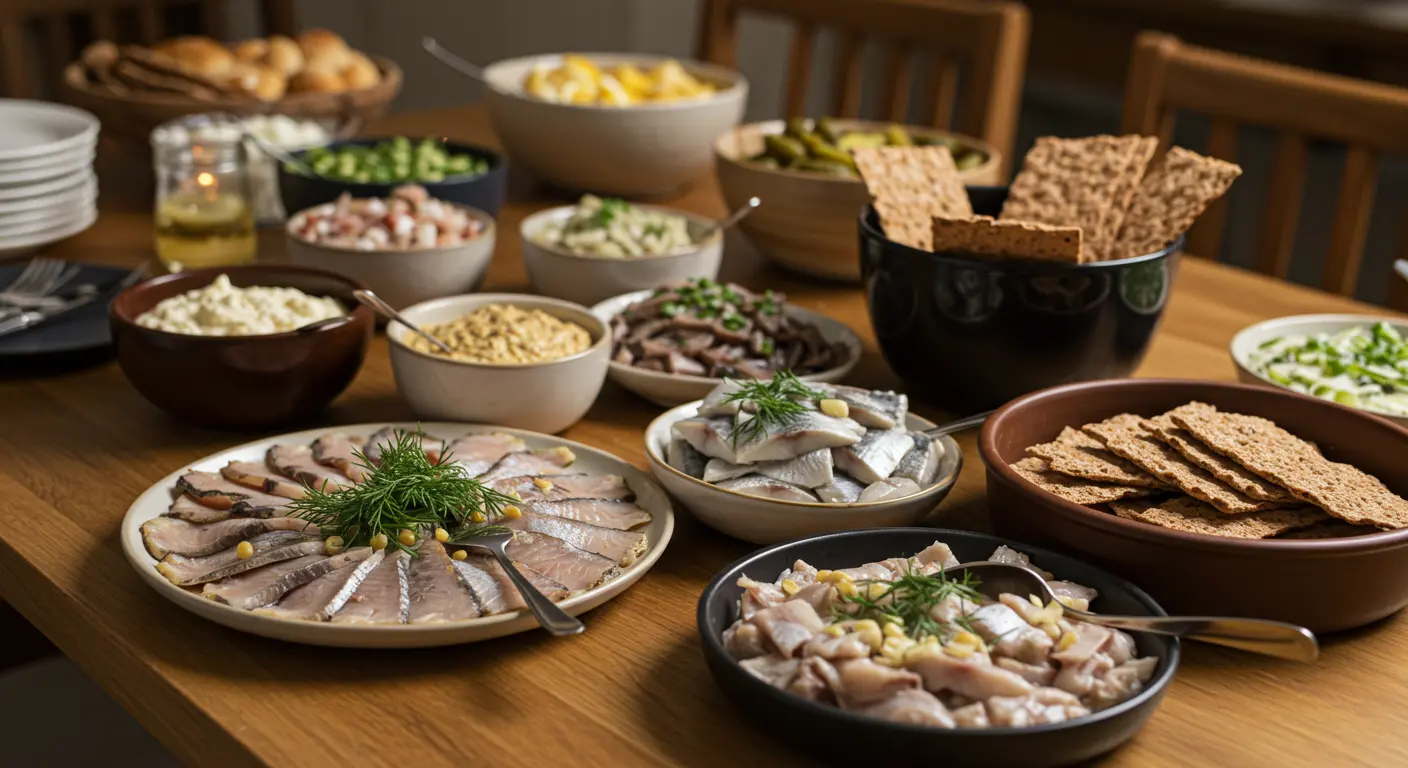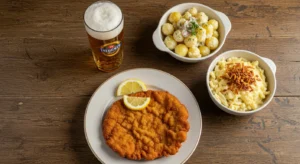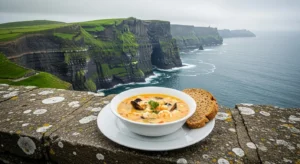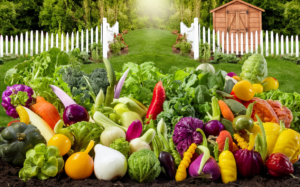Table of Contents
Swedish Food 101: Your Friendly Guide to a World Beyond Meatballs
So, you think you know Swedish food? If your mind immediately jumps to a certain famous furniture store’s cafeteria and those iconic little meatballs, you’re not wrong. But you’re only scratching the surface.
I remember my first real encounter with Swedish cuisine. It wasn’t in a trendy restaurant, but in a cramped Stockholm apartment kitchen, watching a friend’s grandmother effortlessly roll out paper-thin pancakes. The air was filled with the scent of cardamom and coffee, and it hit me—this was the real thing. It was humble, heartfelt, and deeply connected to the rhythm of the seasons. Swedish food isn’t about flashy techniques; it’s about comfort, community, and making the most of what nature provides.
If you’re a beginner to this Nordic wonderland of flavors, you’re in for a treat. Let’s pull up a chair and dive into the delicious, simple, and sometimes surprising world of authentic Swedish food.
The Heart of the Swedish Kitchen: Husmanskost
To understand Swedish food, you need to know the term husmanskost (pronounced hoos-mans-kost). There’s no perfect English translation, but “homely fare” or “simple, honest food” gets close. This is the backbone of the cuisine: the hearty, no-fuss dishes that have fed families for generations.
Rooted in a history of farming and fishing, husmanskost is built on a few key principles:
- Seasonality: Eating what’s fresh and available. Think of asparagus in spring, fresh berries in summer, and root vegetables in the dark winter months.
- Preservation: Before refrigeration, Swedes mastered the art of salting, smoking, drying, and fermenting to survive the long winters. This is why you’ll find an abundance of pickled herring, crispbreads, and lingonberry jam (which acts as a natural preservative).
- Simplicity: Flavors are clean. Dishes are rarely overly spicy. The quality of the potato, the fish, or the meat is meant to shine.
This isn’t fancy restaurant food; it’s the food of home, and that’s where its magic lies.
The Swedish Food Hall of Fame: Dishes You Need to Know
Alright, let’s get to the good stuff. Here’s a rundown of the absolute classics that define the Swedish table.
Köttbullar (Swedish Meatballs)
Yes, we have to start here, but let’s give them their due respect. Authentic Swedish meatballs are a world away from the frozen variety. They’re typically a mix of finely ground pork and beef, spiced with allspice and nutmeg, and pan-fried to tender perfection. The real star is the creamy gravy, made from the pan drippings, beef broth, and a generous splash of cream. Served with mashed potatoes, lingonberry jam, and sometimes pickled cucumber, it’s a perfect symphony of savory, sweet, and tangy.
The Art of Fika: More Than Just a Coffee Break
If you take one Swedish tradition home with you, make it fika (fee-ka). It’s both a verb and a noun, representing a moment to slow down, connect with friends or colleagues, and enjoy a cup of coffee with something sweet. It’s a cherished daily ritual, a cornerstone of Swedish social life.
And what do you eat during fika? The options are delightful:
- Kanelbullar (Cinnamon Buns): Sweden’s national bun. Softer, less sweet, and more cardamom-spiced than their American cousins. They are a true art form.
- Kladdkaka (Sticky Chocolate Cake): A gooey, dense, and wonderfully messy chocolate mud cake. It’s the ultimate comfort dessert.
- Prinsesstårta (Princess Cake): An iconic green dome covered in marzipan. Slice it open to find layers of sponge cake, jam, pastry cream, and a thick layer of whipped cream.
Smörgåsbord: The Grand Buffet of Dreams
Smörgåsbord literally means “sandwich table,” but it’s so much more. It’s a lavish buffet, especially popular during Christmas (Julbord). There’s a specific order to tackling it, traditionally starting with herring and moving towards the sweeter dishes. A proper smörgåsbord will feature:
- Various types of Sill (Pickled Herring): Mustard, onion, garlic—the varieties are endless.
- Gravlax: Dill-cured salmon, served with a sweet mustard sauce (hovmästarsås).
- Janssons Frestelse (Jansson’s Temptation): A decadent potato, onion, and anchovy casserole.
- Värmlandskorv (Värmland Sausage): A spiced pork sausage.
- Cold Cuts and Cheeses: Served with crispbread (knäckebröd).
The Seafood Staple: Gravlax
We have to pause on gravlax for a second. This dish is a perfect example of Swedish culinary genius. Fresh salmon is cured for a few days with a mix of salt, sugar, and copious amounts of dill. The process “cooks” the fish without heat, resulting in a silky, fragrant, and utterly delicious delicacy. It’s surprisingly easy to make at home and is a guaranteed showstopper.
Trust and Tradition: The Role of Trustworthy Sources
Understanding a country’s food is about trusting its sources. Swedish food culture is deeply tied to organizations that uphold quality and tradition. For instance, the Swedish Food Agency provides guidelines that ensure food safety and promote healthy eating habits that align with the traditional Nordic Diet.
Furthermore, when researching for this piece, I turned to authoritative cultural hubs like the official Visit Sweden website, which offers a reliable and authentic look at the nation’s culinary heritage, straight from the source. It’s this combination of government-backed standards and cultural promotion that makes learning about Swedish cuisine so trustworthy.
Navigating a Modern Swedish Menu: A Beginner’s Cheat Sheet
Feeling a bit overwhelmed? Don’t be. Here’s a quick guide to help you order or cook with confidence.
- Potatoes are a staple. They’re served boiled, mashed, or as a gratin. Embrace them.
- Lingonberries are your friend. This tart, red berry is served as a jam with savory dishes, not desserts. It cuts through rich flavors beautifully.
- Don’t fear the herring. Approach it with an open mind. Start with a milder variety, like herring in cream sauce.
- “Lagom” is the key. This untranslatable word means “not too much, not too little, just the right amount.” It’s the philosophy behind Swedish portions and flavors—balanced and satisfying.
Beyond the Classics: What’s Cooking in Sweden Today?
Modern Swedish cuisine is having a moment. A new generation of chefs, inspired by the “New Nordic Cuisine” movement pioneered by renowned restaurants like Noma in Copenhagen, is reimagining husmanskost. They’re foraging for wild herbs, using overlooked cuts of meat, and presenting traditional dishes with a stunning, modern aesthetic. This doesn’t replace the classics; it celebrates them in a new light, proving that Swedish food is as dynamic as it is traditional.
Your Swedish Food FAQs, Answered
Q: Is Swedish food very spicy?
A: Generally, no. Swedish cooking relies more on herbs like dill, chives, and allspice rather than chili heat. The “spice” often comes from the tang of pickled or fermented foods.
Q: What’s the deal with surströmming (fermented herring)?
A: Ah, the infamous one! Surströmming is herring that’s fermented for months, resulting in a powerfully pungent smell. It’s an acquired taste, and even most Swedes treat it as a daring once-a-year challenge. It’s not for beginners, so maybe work your way up to it!
Q: Are there good vegetarian options in Swedish cuisine?
A: Traditionally, it’s a meat-and-potatoes culture, but this is changing rapidly. Many classic dishes can be adapted, and modern restaurants offer fantastic veggie options. Look for dishes like Ärtsoppa (yellow pea soup) – it’s traditionally eaten with pork, but is delicious and hearty on its own.
Q: Why is there so much fish?
A: Sweden has a long coastline and thousands of lakes. Fish, especially herring and salmon, has always been an abundant and vital source of protein.
Q: How do you pronounce smörgåsbord?
A: A valiant effort is all we ask! It’s roughly “SMUR-goes-bord.” The “smörgås” means open-faced sandwich, and “bord” means table.
A Final Bite of Wisdom
Swedish food is a beautiful reflection of the landscape and people—understated, thoughtful, and deeply welcoming. It’s about the cozy comfort of a plate of meatballs on a dark winter night, the joyful pause of a fika with a friend, and the celebratory feast of a smörgåsbord.
So, the next time you have the chance, skip the familiar and seek out the authentic. Buy a packet of cardamom, try your hand at a cinnamon bun, or simply sit down with a strong coffee and a piece of dark chocolate. Take a moment. That’s the real taste of Sweden.
Hej då! (That’s Swedish for goodbye!)




